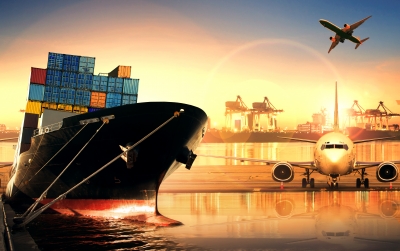-
The Bangsamoro government formally adopted operational guidelines for barter trade, a major policy milestone expected to regulate cross-border trade between the Bangsamoro Autonomous Region in Muslim Mindanao and its Southeast Asian neighbors
-
The guidelines were finalized and approved by the Bangsamoro Barter Trade Council
-
They outline procedures and standards that ensure compliance with regional trade protocols, while promoting a more organized and transparent flow of goods within the BIMP-EAGA
The Bangsamoro government formally adopted operational guidelines for barter trade, a major policy milestone expected to regulate cross-border trade between the Bangsamoro Autonomous Region in Muslim Mindanao (BARMM) and its Southeast Asian neighbors.
The guidelines were finalized and approved by the Bangsamoro Barter Trade Council (BBTC) in a series of meetings held on October 8 and 9, according to a statement from the Bangsamoro Information Office.
Designed to provide a clear framework for traders, the guidelines outline procedures and standards that ensure compliance with regional trade protocols, while promoting a more organized and transparent flow of goods within the Brunei Darussalam–Indonesia–Malaysia–Philippines East ASEAN (Association of Southeast Asian Nations) Growth Area (BIMP-EAGA).
Formed officially in 1994 under the initiative of the Philippine government, BIMP-EAGA is an economic complementation of regional areas of the four participating countries and is aimed at stimulating growth within the sub-region.
Officials believe this move will not only boost the Bangsamoro economy but also position BARMM as a more active player in subregional cooperation.
“This is not just a policy — it is a foundation for peace, prosperity, and partnership across our seas,” Bangsamoro minister of trade, investments, and tourism Farserina Mohammad said.
“From the barter of our ancestors to the trade routes of today, the Bangsamoro spirit endures — resilient, enterprising, and faithful. May this document be our vessel of reform, our compass for growth, and our bridge to lasting peace and shared prosperity,” she added.
According to a previous study facilitated by the Mindanao Development Authority, it has been recognized in the BIMP-EAGA level that a significant portion of intra-EAGA trade is informal trade carried out by native traders primarily from Western Mindanao, using non-convention-sized ships.
The BBTC is composed of key ministries and agencies in the Bangsamoro government, including the Ministry of Trade, Investments, and Tourism; Ministry of Finance, and Budget and Management; Ministry of Agriculture, Fisheries, and Agrarian Reform; Ministry of the Interior and Local Government; Ministry of Transportation and Communications; Ministry of Health; Ministry of Environment, Natural Resources and Energy; Bangsamoro Planning and Development Authority; the Bangsamoro Economic Zone Authority; the Bangsamoro Ports Management Authority; and the Bangsamoro Maritime Industry Authority.
Representatives from the private sector are also part of the council.
The Bangsamoro autonomous region was formally created through Republic Act 11054 approved in July 2018.
READ: MARINA, BMARINA expand partnership to strengthen maritime safety









